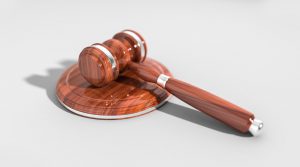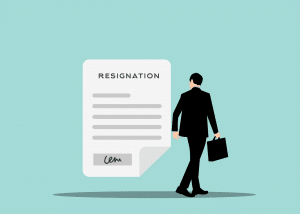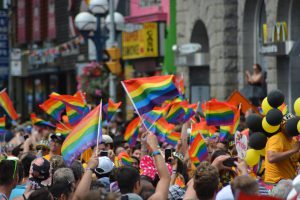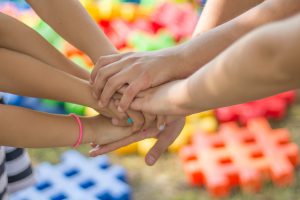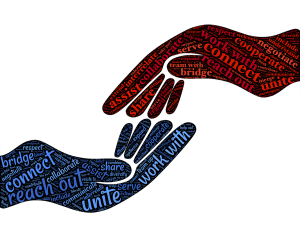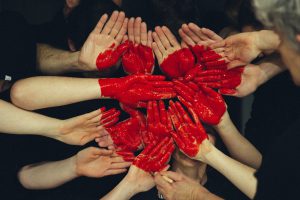It’s Pride Month! Time to show how proud we are to be who we are, and to express our individuality, while also celebrating the strides that we’ve made together! But, while one of the things we can be proud of is that our country is a much more inclusive, diverse, and equal place than it once was, we also have to recognize that things are far from perfect. In fact, even though we’re living in the 2020s, we need to come together during Pride as much, if not more, than ever, as the LGBTQ community continues to face and fight a number of battles.
The Battles We Have Won
Maybe it’s not true that we need Pride more than ever before in history, or that we’re living in the darkest of dark times – we can certainly be more positive than that! In fact, let’s take a moment to look at some of the biggest legal battles that we’ve fought and won: the Supreme Court cases that went in favor of LGBTQ rights.
One, Inc v. Olesen (1958)
In 1953, a publisher associated with the Los Angeles chapter of the Mattachine Society, one of the country’s first LGBTQ organizations, released something unique for its time: ONE: The Homosexual Magazine. The magazine is considered to be America’s first widely-distributed magazine for gay readers. Not long after publication began, its August and October editions were seized by the Los Angeles postal authorities, with authorities arguing that the publication violated obscenity laws. In its decision, the Supreme Court tossed out a lower court’s ruling, and established that material aimed at a gay audience was not inherently obscene. The decision validated that people had the right to publish LGBTQ media.
Romer v. Evans (1996)
In this decision, the Supreme Court ruled that laws couldn’t single out LGBTQ people to take away their rights. This case was brought to the Supreme Court after an amendment to a Colorado law banned cities from passing anti-discrimination laws that would protect gay and bisexual people. In a 6-3 decision, the Court ruled that the law didn’t adhere to the 14th Amendment’s equal protection clause, because of how it singled out a certain group.
“Even if, as the state contends, homosexuals can find protection in laws and policies of general application,” Justice Anthony Kennedy said in the majority opinion, “[the Colorado law] goes well beyond merely depriving them of special rights. It imposes a broad disability upon those persons alone, forbidding them, but no others, to seek specific legal protection.”
Lawrence v. Texas (2003)
In 2003, the Supreme Court essentially overturned our country’s archaic sodomy laws, with Justice Kennedy noting that the government shouldn’t have much say in what we do consensually behind closed doors. He said that the due process clause of the fourteenth amendment gave the petitioners “the full right to engage in private conduct without government intervention… The Texas statute furthers no legitimate state interest which can justify its intrusion into the individual’s personal and private life.”
Karen Loewy, senior counsel Lambda Legal, which fights for LGBTQ legal rights, says LAMBDA fought for this ruling to emphasize the fact that “public ideas about morality cannot justify infringing people’s constitutional rights.” Loewy says that this was an essential case because “the court really recognized that LGBTQ people are entitled to constitutional protections for intimate conduct. For private, consensual, intimate conduct.”
United States v. Windsor (2013)
In this case, which is seen as a precursor to the full legalization of same-sex marriage, a widow named Edith Windsor who had been married in Canada and then moved to New York (where same-sex marriage was legal), was fighting being denied her right to her partner’s tax exemption for surviving widows. She had bumped up against the Defense of Marriage Act (DOMA) of 1996, which defined marriage as a “legal union between one man and one woman as husband and wife.”
But when the case came to the Supreme Court, it was decided that DOMA violates due process and equal protection principles, with Justice Kennedy noting, “DOMA’s principal effect is to identify a subset of state-sanctioned marriages and make them unequal. The principal purpose is to impose inequality, not for other reasons like governmental efficiency.” So Windsor got her tax refund AND brought down DOMA.
Obergefell v. Hodges (2015)
Here’s the big one we all remember: the Supreme Court decision that legalized same-sex marriage. In a 5-4 vote, the Supreme Court found for the petitioners, a group of 14 same-sex couples and two men whose partners were deceased, who argued that state officials violated the 14th amendment’s equal protection clause by prohibiting them from marrying or not recognizing marriages performed in other states.
“It is demeaning to lock same-sex couples out of a central institution of the Nation’s society, for they too may aspire to the transcendent purposes of marriage,” Justice Kennedy said in the Court’s opinion.
The court also extended them the benefits guaranteed to opposite-sex married couples, which meant that same-sex couples could begin to receive the necessities that opposite-sex couples had been able to take for granted, like social security and survivor benefits.
Loewy argues that this decision also had a profound cultural impact, because it gave LGBTQ people a “common language” with straight people.
Bostock v. Clayton County (2020)
While it was unclear for a while whether the Supreme Court would agree that Title VII of the Civil Rights Act of 1964 (which bans sex discrimination by employers) applied not just to gender, but also to sexual orientation and gender identity, this case finally settled it. This case was actually three cases in one, and in each of these cases, an employer allegedly fired a long-time employee simply for being gay or transgender. Clayton County, Georgia, fired Gerald Bostock for conduct “unbecoming” a county employee shortly after he began participating in a gay recreational softball league. Altitude Express fired Donald Zarda days after he mentioned being gay. And R. G. & G. R. Harris Funeral Homes fired Aimee Stephens, who presented as a male when she was hired, after she informed her employer that she planned to “live and work full-time as a woman.” Each employee sued, alleging sex discrimination under Title VII of the Civil Rights Act of 1964.
The Supreme Court reversed an earlier decision of the 11th Circuit in a 6-3 ruling, holding “an employer who fires an individual merely for being gay or transgender violates Title VII.” This means that we have finally made a big step toward a federal law banning LGBTQ discrimination in the workplace.
The above are just the big, more visible legal battles that have been fought and won: not all of the rights fought for have been won in the highest court in the land. Some were waged on the state and local level; other fights have been less formal, and have been focused on changing attitudes and assumptions. And all of this has been amazing and culture-shaping, but we are not done by any means, and new challenges continue to crop up.
The Battles Still Being Fought
So what is the LGBTQ community still facing? Essentially, a whole lot of bills, mostly in state legislatures that could mean a whole lot of legal battles ahead. Here’s a look at some of the types of bills floating around that are meant to erode the rights of the LGBTQ community:
“Don’t Say Gay”
Around 75 new bills that have been introduced around the country call for bans or severe restrictions on classroom discussions, curriculum, and library books that mention LGBTQ issues. Some of these bills are vaguely worded, making it unclear whether educators or students could even mention their own sexual or gender identity, or that of their parents, on school grounds. This is where the term “don’t say gay,” describing Florida’s bill, which passed the state legislature on March 8, has come from.
Bans on Life-Saving Gender Affirmation for Transgender Youth

At least 29 bills around the country are seeking to ban gender-affirming medical care for transgender youth, which generally involves hormone therapy to delay the onset of puberty or to begin the process of transitioning. Some lawmakers are also trying to make it a crime to provide such care to children and young teens, or to make it a crime for parents to give their consent for this care. This is incredibly worrying, as well as counter to all medical advice, since the American Medical Association, the American Academy of Pediatrics, and other medical groups endorse the treatments, saying gender-affirming care can help save the lives of vulnerable transgender young people.
“Bathroom Bills”
Thought we were done with fights over who gets to use which bathroom? Nope. There are at least 15 bills seeking to ban transgender students, and sometimes faculty, too, from using the bathrooms in their schools consistent with their gender identity.
Legalized “Outing”
There are at least a dozen pending bills that would require medical care providers and educators who learn of a child’s LGBTQ status to notify parents.
Religious Exemptions
We are also still not done fighting over the “right” to discriminate in the name of religion: at least 15 bills have been introduced to allow religious exemptions to discriminate against LGBTQ people. This includes in healthcare settings, and in foster care and adoption agencies, among other places.
“The Worst Year in Recent History for LGBTQ State Legislative Attacks”: A Call to Action
It’s scary and distressing that 2021 set a record for the most anti-LGBTQ bills passed during a legislative session, with over 100 anti-LGBTQ laws being proposed in 35 states around the country. And now, in 2022, some counts put the number of bills meant to restrict LGBTQ rights pending in state legislatures across the nation at around 240 in just the first three months of the year, 6 times more than the number of bills introduced in all of 2018.
But there’s some good news, too. First, many of these bills are not expected to get very far. Of course, with that being said, just having them introduced means that LGBTQ folks – especially children – are being caught up in political drama, which is exhausting and stressful.
So what other good news is there to hold onto, then? This willingness to openly attack gay and transgender rights with these bills is not shared by most people, according to several recent surveys. A Public Religion Research Institute survey showed nearly 8 in 10 Americans support laws to protect LGBTQ people from discrimination in jobs, housing, and public accommodations. The survey also found that 68% of Americans support same-sex marriage, a rise from 54% in 2014.
And you know what else is good news? The LGBTQ community is as strong as ever, and will continue the good fight – we just wish they didn’t have to, and could go back to living their lives. And don’t forget, even if you aren’t a member of the LGBTQ community, we all need to pay attention to what is happening in our states and communities, so we can fight against it. If the numbers are correct, and most of us don’t want to live in a country that discriminates against our friends, neighbors, loved ones, teachers, and children, we need to make our voices heard.
